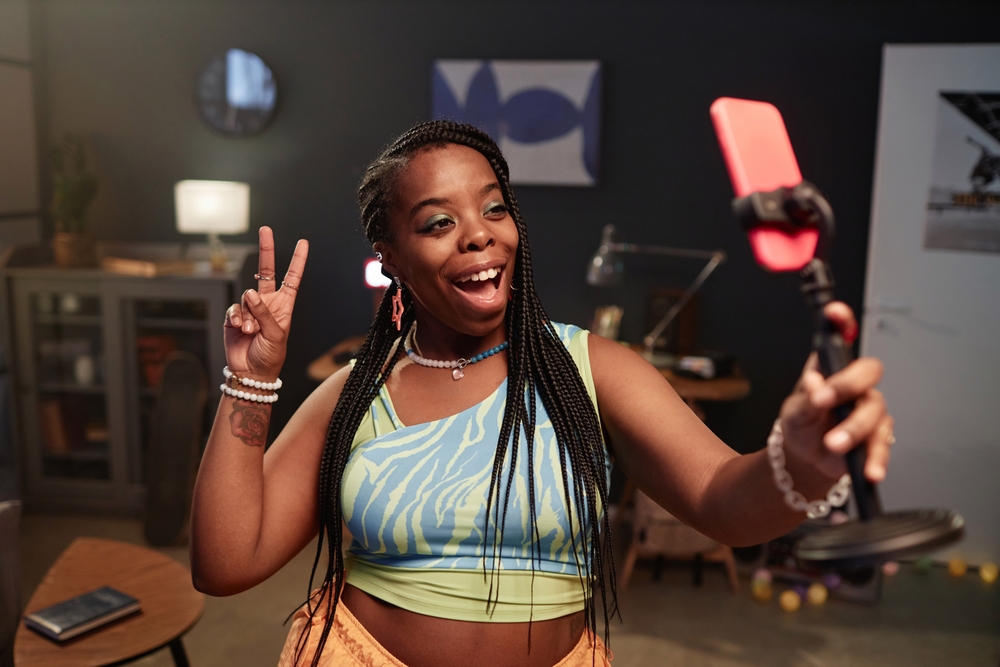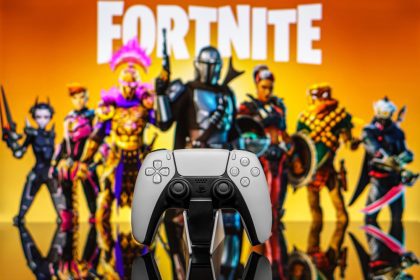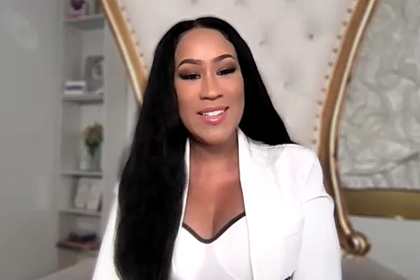Scrolling through perfectly curated Instagram feeds and polished TikTok videos makes influencer life look like an endless vacation funded by brand partnerships and free products. The reality behind those highlight reels involves more spreadsheet management than spontaneous content creation, more rejection emails than collaboration offers, and more unpaid hours than most traditional jobs require.
The influencer economy has created opportunities that didn’t exist a decade ago, but it’s also created unrealistic expectations about how easy it is to turn social media presence into sustainable income. For every influencer living their best sponsored life, there are thousands of content creators grinding away without recognition, payment, or clear paths to growth.
If you’re seriously considering the influencer path, understanding what it actually takes beyond posting pretty pictures can save you from expensive mistakes and unrealistic timeline expectations. The barrier to entry might seem low, but the barrier to success is higher than most people realize.
Your personality needs to be your product
Successful influencers aren’t just people who happen to look good on camera or have interesting lives. They’re individuals who can package their personality, expertise, or perspective into content that consistently entertains, educates, or inspires their audience. Your personal brand becomes your business, which means every aspect of your life becomes potential content material.
This constant performance can be emotionally exhausting in ways that aren’t immediately obvious. You need to be “on” whenever you’re creating content, maintain consistency in your voice and messaging, and share enough of your personal life to create authentic connections without losing all privacy and boundaries.
The most successful influencers have a clear point of view or area of expertise that sets them apart from the millions of other content creators competing for attention. Whether it’s fitness knowledge, cooking skills, fashion sense, or simply an entertaining personality, you need something that gives people a reason to follow you instead of someone else.
Authenticity has become the buzzword of influencer marketing, but genuine authenticity is harder to maintain than it appears. The pressure to create content consistently can push you toward manufactured moments and forced enthusiasm that audiences can detect. Finding the balance between authentic self-expression and engaging content creation is an ongoing challenge.
Your ability to handle criticism and negative feedback also becomes crucial when your personality is your product. Internet trolls and harsh comments are inevitable parts of putting yourself online, and your mental health strategy needs to account for the emotional impact of constant public scrutiny.
Content creation is a full-time job disguised as fun
The polished content that makes influencer life look effortless often requires hours of planning, shooting, editing, and strategy that followers never see. What appears to be a casual morning routine video might involve multiple takes, careful lighting setup, audio recording, editing software mastery, and strategic posting timing.
Successful influencers typically spend more time on the business side of content creation than on the creative side. This includes responding to comments and messages, negotiating brand partnerships, managing finances, analyzing performance metrics, planning content calendars, and handling administrative tasks that come with running a business.
The pressure to constantly create fresh, engaging content can lead to creative burnout and a feeling that you’re never truly off work. Your life becomes content material, which means you’re always thinking about how experiences might translate into posts, stories, or videos that will resonate with your audience.
Technical skills become increasingly important as platforms evolve and audience expectations rise. Basic photo editing, video production, graphic design, and understanding platform algorithms are no longer optional skills for serious content creators. The learning curve can be steep, especially if you’re not naturally tech-savvy.
Consistency is crucial for growth, but maintaining regular posting schedules while creating quality content requires significant time management skills and often means sacrificing spontaneity in your personal life. Your content calendar starts dictating your lifestyle rather than the other way around.
Building an audience takes longer than you think
The influencers you see with hundreds of thousands of followers didn’t build those audiences overnight, despite what their success stories might suggest. Most successful creators spent years building their following gradually, and many experienced multiple false starts before finding their niche and voice.
Algorithm changes on social media platforms can dramatically impact your reach and growth, sometimes undoing months of progress through no fault of your own. Building a sustainable influencer career requires diversifying across multiple platforms and creating direct connections with your audience that don’t depend entirely on platform algorithms.
Engagement rates often matter more than follower counts when it comes to monetization opportunities, but building genuine engagement requires creating content that consistently adds value to your audience’s lives. This means understanding your followers’ interests, problems, and preferences well enough to create content that resonates consistently.
The competition for attention has intensified dramatically as more people recognize the potential of influencer careers. Standing out requires either exceptional creativity, unique expertise, or remarkable consistency that many aspiring influencers underestimate when they’re starting out.
Growth typically happens in phases rather than steady increases. You might experience periods of rapid growth followed by plateaus that can last months, requiring patience and persistence that many creators aren’t prepared for when they start their journey.
Money doesn’t flow as easily as it seems
Most influencers don’t earn significant income until they’ve built substantial followings and established reputations within their niches. The path from zero followers to sustainable income typically takes much longer than people expect, and many creators need other income sources while building their influence.
Brand partnerships, which seem like easy money from the outside, often involve extensive negotiations, specific content requirements, and payment terms that can stretch for months after work completion. The administrative overhead of managing multiple brand relationships can become overwhelming without proper systems.
Pricing your services appropriately requires understanding market rates, your audience demographics, engagement metrics, and the value you provide to brands. Many new influencers undercharge for their work, while others price themselves out of opportunities by overestimating their market value.
The influencer economy is still relatively new, which means income can be unpredictable and seasonal. Unlike traditional employment with steady paychecks, influencer income often fluctuates dramatically based on brand budgets, algorithm changes, and market conditions beyond your control.
Tax implications for influencer income can be complex, especially when dealing with product gifting, international brand partnerships, and business expense deductions. Professional financial advice becomes necessary as your influence grows, adding another business expense to consider.
The mental health cost nobody talks about
Living your life online exposes you to constant judgment, comparison, and criticism that can significantly impact mental health and self-esteem. The pressure to maintain a perfect image while dealing with negative comments and online harassment affects many content creators more than they initially anticipate.
The boundary between personal life and work becomes increasingly blurred when your personality and lifestyle are your business. This can strain relationships with family and friends who didn’t sign up to be part of your content creation or who become frustrated with the constant documentation of shared experiences.
Comparison with other influencers becomes inevitable and can be devastating to self-confidence and motivation. Social media amplifies highlight reels rather than behind-the-scenes struggles, making it easy to feel like everyone else is more successful, creative, or naturally suited for influencer life.
The uncertainty and unpredictability of influencer income can create significant stress and anxiety, especially for people who rely entirely on content creation for their livelihood. The feast-or-famine nature of the work can be emotionally challenging even when you’re financially successful.
Isolation can become a problem for influencers who work alone and spend most of their time creating content rather than engaging in traditional workplace social interactions. The perceived glamour of the lifestyle can make it difficult to discuss these challenges with people who don’t understand the unique pressures of influencer work.
Building a sustainable influencer business
Success as an influencer requires treating content creation as a legitimate business from the beginning, with proper planning, goal setting, and financial management. This means developing multiple revenue streams, building email lists, creating products or services, and diversifying beyond social media platform dependence.
Developing genuine expertise in your chosen niche creates long-term value that transcends social media trends and algorithm changes. Whether it’s fitness knowledge, business skills, creative abilities, or specialized interests, deep expertise provides sustainable competitive advantages over creators who rely solely on personality or aesthetics.
Building authentic relationships within your industry and with your audience creates opportunities that extend beyond individual posts or campaigns. Networking with other creators, industry professionals, and brand representatives can lead to collaborations and opportunities that aren’t available through cold outreach or platform discovery alone.
Creating systems and processes for content creation, business management, and audience engagement allows you to scale your influence without burning out or sacrificing quality. This includes content planning tools, customer relationship management systems, and boundaries around personal time and space.
The most successful long-term influencers evolve beyond social media into broader media personalities, business owners, or industry experts who use their platforms as launching pads for larger ventures. Thinking beyond individual posts toward building lasting personal brands and businesses creates more sustainable career paths.
Understanding these realities doesn’t mean pursuing influencer careers is impossible or inadvisable. It means approaching the opportunity with realistic expectations, proper preparation, and sustainable strategies that account for both the potential rewards and significant challenges of building influence in an increasingly crowded digital landscape.
















